Prophetic Leadership Toward a More Just World
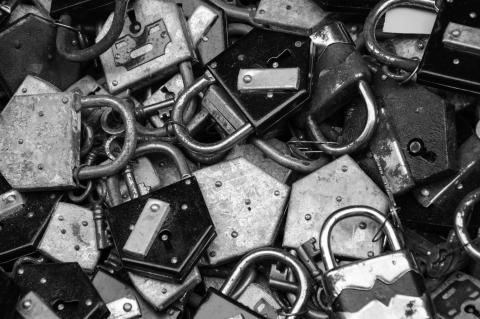
Faith communities across the country are drawing from deep wells of legacy to organize and advocate for a more just world. People of faith are returning to their spiritual roots for guidance on how to engage the world’s struggles for justice in ways that honor our faith. To equip faith communities to boldly do the work of justice in their own areas, Sojourners offers the Faith in Action series. Learn more about how to put your faith into action here.
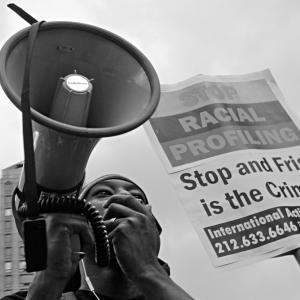
The other night in Central Park, three African-American young men were stopped by a police officer and asked if they had or were selling drugs. The answer was “No!” They were three students from Columbia University making their way from the East Side to the West. This tale unveils the problem of implicit bias in our society today.
The reason the three college students were stopped in Central Park was because they were “walking while being black.” Because of New York’s stop-and-frisk practice that targets black and brown young men, a growing number of African-American and Latino youth are being introduced into the New York state criminal justice system daily.
The statistics are staggering. African Americans are incarcerated at six times the rate of whites in the U.S. prison system. One out of every 15 African Americans over 18 years old are incarcerated, while 1 out of every 106 white males of the same age are incarcerated. In The New Jim Crow, Michelle Alexander argues that there are more African Americans in the criminal justice system than were enslaved in 1865. As Jim Wallis has argued, racism is America’s original sin.

After your recent relocation to a new city, you are invited to a local congregation by one of its members. After that first visit, you don’t find anything compelling you to come back to worship the following Sunday.
Now fast forward five years. For some unknown reason, you find yourself visiting that same congregation. But this time, it is obvious that something dramatic has happened; a new senior pastor has been called, and, in less than a year, the transformation of the church has been dramatic. The trend of slowly losing members has now stopped. To the delight of longtime members, almost every Sunday new people are accepting Christ or renewing their commitment to Christ. Vibrant children, youth, and family ministries are now in place. Ten percent of the budget is dedicated to local and global mission. People are growing deeper in their faith. The congregation of a little less than 400 begins to grow in such a way that during the following five years it reaches 1,600 members. This time around, you and your family decide to join this congregation. Your faith is reenergized and you feel like you are finally in the right place.
The story could end here and we could say, “This family happily and faithfully journeyed with this congregation for many years.”
There was only one problem in this successful congregation.
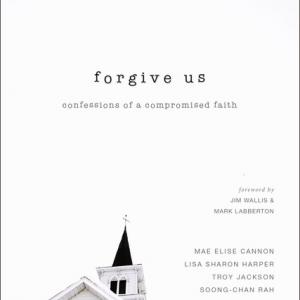
I attended Catholic school for one year as a child. My second-grade year in Philadelphia’s St. Athanasius left me with a strong sense of the mystery of the church. The most mysterious space there was the confessional booth. I wasn’t allowed to enter because I wasn’t Catholic, so I just sat and watched others enter with pinched brows. Then they would exit with peace painted over their faces.
There is a scene in the book Blue Like Jazz where author Donald Miller sets up a confessional box in the center of the Reed College campus. But Miller’s confessional worked in reverse. Students of Reed, which is known as the most liberal campus in the country, entered the confessional booth with curiosity, cynicism, skepticism, or worse — to disprove this thing called Christianity. But what they encountered upon entry was disarming — even healing. Rather than prompts to confess their sin, Miller sat on the other side of the veil and confessed of the sins of the church. This was a revolutionary act in the context where, according to Gabe Lyons and David Kinnaman’s modern classic, UnChristian, the general consensus about Christians is decidedly negative.
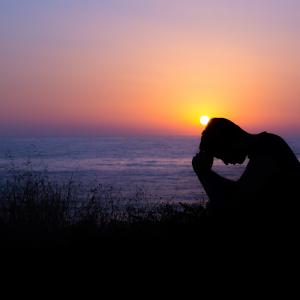
“If my people, which are called by my name, shall humble themselves, and pray, and seek my face, and turn from their wicked ways; then will I hear from heaven, and will forgive their sin, and will heal their land.” —2 Chronicles 7:14
Confession and repentance are messy and painful, and they don’t come natural to us. Our human heart is in a natural state of denial. Without an external agent, God, we are unable to recognize our prejudices, offenses, and sins.
In the previous text God speaks to God’s people, those whom God claims as God’s own. We belong to the Creator and to each other. That means that regardless of how we perceive others, and regardless of how others perceive us, bonds that can’t be broken tied us up. The relationship we share is held together by the very identity of God. Mother Teresa reminded us “we have forgotten that we belong to each other — that man, that woman, that child is my brother or my sister.”
It is necessary that we understand that this belonging is mutual. I belong to you and you belong to me. There is no escape; we can’t change this relationship. It is only when I recognize others and welcome them into my life that the fullness of God’s identity in me is revealed. No one is an outsider. No one should be left out at the door of my heart; to do so is to deny my God-given identity.
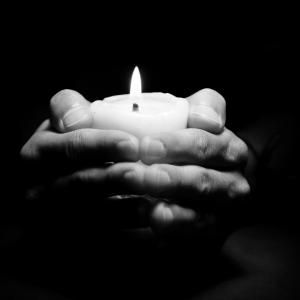
Often we do not know how our words and actions affect and harm others. However, ignorance is not an excuse. As the body of Christ, we must be willing to look deeply at the implications of the choices we make. When those choices cause harm – intentionally or unintentionally – we must repent and ask for forgiveness.
Forgive Us: Confessions of a Compromised Faith was a cry from my heart and the hearts of my coauthors as we wrestled with what it means to be the church of “Good News” in the 21st century. So many people do not see the evangelical church from that perspective. The church – rather than being Good News – is often a painful place where broken people, judgment, and criticisms prevail.
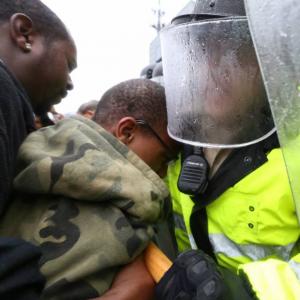
“Get the word out. Teach all these things. And don’t let anyone put you down because you’re young. Teach believers with your life: by word, by demeanor, by love, by faith, by integrity.” –1 Timothy 4:12 (The Message)
In our recent book Forgive Us: Confessions of a Compromised Faith, Mae Cannon, Lisa Sharon Harper, Soong-Chan Rah, and I call the American church to a posture of repentance due to all the times we have not only been on the wrong side of history, but on the wrong side of God.
As an organizer and director of the AMOS Project in Cincinnati, I’ve discovered that a humble spirit of repentance is critical to powerful work around racial and economic justice. There can be a strong temptation to replay colonialism by having all the answers and believing we are God’s gift to the oppressed. We white evangelicals are particularly susceptible to this arrogant path. Humility and a repentant spirit are key to a healthy engagement and partnership in our work.

September is often associated with the celebratory beginning of a new school year. It’s a time of hopeful anticipation for students, parents, and teachers filled with new school supplies and new friends.
In many communities, however, the beginning of the school year is a cause for concern and anxiety.
Instead of hallways filled with artwork and sports trophies, many students will walk into prison-like environments complete with metal detectors, and the presence of police and armed security officers. These officers have more than a chilling effect. They also have the authority to arrest students, often for minor misbehavior. When you couple the harshness of the school environment with zero tolerance policies that criminalize children’s non-violent infractions like being late to class, violating a dress code, or even chewing gum, one can begin to see the school discipline crisis.
The patchwork of overly harsh disciplinary policies that funnel children directly from the classroom to the juvenile justice system is referred to as the school-to-prison pipeline. In schools across America, students, especially students of color, who should be sent to the guidance counselor to find out what’s really wrong end up at the police station. These policies are expensive, unjust, and ineffective. They also lower academic achievement, lead to dropout, and do little to make schools safer.
Even more troubling, we find that the rules are different for children of color, who are punished more often and more severely than white students for the same offenses. These students are not behaving any worse than others, but they are disciplined at a higher rate because of racial bias. These same patterns we see in schools are also playing out in the criminal justice system: African Americans are imprisoned at higher rates and given more severe sentences than whites for the same offenses.
The school-to-prison pipeline is a moral and racial justice crisis. Solving the problem will require an all-hands-on-deck solution.
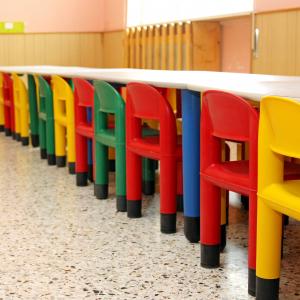
With a new school year upon is us it's appropriate to take a closer look at the troubling and complicated relationship between our nation’s public schools and its criminal justice system.
Growing up in an economically challenged neighborhood in Detroit, it still pains me to remember the sheer number of kids, disproportionately African-American boys, who passed through the juvenile detention system and would later go on to either spend time in prison or who are still in prison now. America’s criminal justice system was omnipresent.
The sad fact is that not much has changed. It’s actually gotten a whole lot worse. America represents less than 5 percent of the world’s population but we have 25 percent of the world’s prisoners. Since the 1970s our prisons have grown by 700 percent. This growth has been most explosive and disproportionate among people of color. Looking at males over the age of 18, 1 out of every 15 African-American men and 1 in 36 Hispanic men in the United States are currently incarcerated. Meanwhile, only 1 in every 106 of white males over 18 are behind bars.
It’s tough to ignore the glaring racial disparities at the center of America’s prison industrial complex. As an African-American woman, Christian, and mother, it breaks my heart and, at times, even tests the limits of my faith. But I also believe in a faith that can move mountains. When it comes to our nation’s criminal justice system, we’ve got mountains to move.
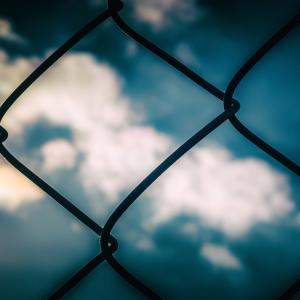
I walked across the school yard and through the ominous painted doors of St. Athanasius Elementary School for the first time. My mother and I had walked hand in hand the long city block from home to the school, across the school yard, through the entrance, down the hallway, heels now echoing against linoleum and lockers as the smell of chalk and mimeographed copies wafted from each classroom we passed.
We entered my second-grade classroom where I was greeted by the teacher who told me to take my seat four heads from the front. That seat was my second home for half of every day for a year.
I had high hopes for second grade. At the very least, I hoped it would be safe. It wasn’t.
The girl who sat behind me demanded 25 cents per day to be my friend — or else. But worse, the white woman charged with teaching our classroom full of African-American children ruled us as if we were in her military camp … or worse… prison.
My teacher once punched me in the back because I forgot to hand in an assignment — in second grade.
Now take that single act of aggression and magnify it: a punch in the back becomes a suspension, an expulsion, or an arrest. Then systematize it. Call it a “Zero Tolerance” policy and spread it across 90 percent of schools in the United States. Then apply the policy inequitably, such that African-American children are punished at higher rates and more severely than white children. That is what happened when the culture of severe punishment promoted by the Tough on Crime movement permeated education systems throughout the 1990s.
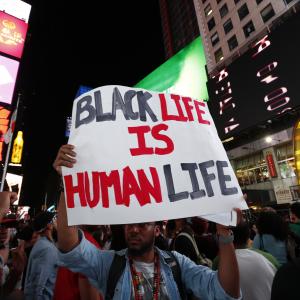
One month ago, the city of Ferguson, Mo., was violently shaken by the shooting death of an unarmed black man whose name is Michael Brown, Jr.
This is not the first time we’ve stood in this place. Michael Brown has been added to the roll call of unarmed black people killed by those hired to protect and to serve. His name joins the names of:
John Crawford , an unarmed Ohio man gunned down inside of a Walmart while examining a toy gun sold in the store.
Eric Garner , an unarmed New York man killed, after stating several times that he was having difficulty breathing, by an officer using an illegal choke hold.
Sean Bell , an unarmed New York man shot multiple times outside of the venue for his bachelor party the night before his wedding.
Oscar Grant , an unarmed Oakland man who was handcuffed, face down, before he was fatally shot.
And so many more black lives, both male and female, ended by the reflexes of a legal system designed to police some and protect others.
So why did the killing of Michael Brown, Jr. ignite such a firestorm of rage in a region and a nation where slain black bodies are commonplace?
This is not one of those neighborhoods that cause political analysts to pontificate over “how something so tragic could happen here.”
These are not deaths that leave communities and congregations struggling to find deeper meaning and psychological factors that might have contributed to the tragic loss of life.
As a matter of fact, since the death of Michael Brown, there have been two killings of black men with documented mental challenges, Ezell Ford of Los Angeles and Kajieme Powell, killed only a few miles from the site of Michael Brown’s death. Yet there have been no roundtable discussions of the role of mental illness in our society sparked by these deaths.
What made Michael Brown’s death different?

You know that time when the apostle Paul says “don’t worry about anything” I sometimes wonder if he could get away with that today.
For example: Did you know that Congress recently had an approval rating of 9 percent? To put that in perspective, 11 percent of citizens want the Unites States to be a Communist country . It’s a lower rate than people who would approve of polygamy! While this is sort of hilarious, it’s also pretty depressing.
Thank God (literally) there isn’t a poll on the approval rating of the church, but as a ministry leader in Seattle, trust me when I say that what makes the headlines is not what anyone would call good news. Throw into the mix the global unraveling we are witnessing in the Middle East, Iraq, and our own treatment of immigrants, and it’s sort of difficult to keep our collective chins up.
So yes, it might feel tough to log onto Facebook, or read the New York Times these days and feel like there is no reason to be anxious. Good thing for us the verse doesn’t end as a pejorative blanket statement. You know, the kind that so often feels like a cheap mandate to simply ignore reality? Instead, it names that that there lots for reasons for why we are surrounded by anxiety. But, in the eloquent paraphrase of the Philippians passage by Eugene Peterson, we are invited to:
“let petitions and praises shape your worries into prayers, letting God know your concerns. Before you know it, a sense of God’s wholeness, everything coming together for good, will come and settle you down.”

I was among millions across the globe wrapped up in the glee of Pharrel William’s song, “Happy.” I first heard it while watching Despicable Me 2 with my family last year. As the credits rolled I remember making a mental note to add it to my workout playlist.
Pharrel even released a 24-hour video of the song on YouTube for millions to enjoy globally – creating a sort of time released happy capsule that was just a click away.
I thought about how this “Happy” anthem struck a chord in our world’s collective unconscious. “Could it be a sign that all of us, the human family, crave deeper joy and some levity?”
I think faith-based communities can discuss this for years to come at a time where joy is a necessity more than a luxury, and ministers are flaming out quicker than ever, and according to a New York Times article, suffer from depression “at rates higher than most Americans.”
Maintaining a sense of joy is then vital for my own work, especially since I lean toward New York-bred cynicism and incredulity. Activism can be rewarding, yet also extremely discouraging at times. Change can seem incremental at best, and the issues are much bigger than any one person or institution can handle. Making joy a vital ingredient in the active life of faith, within the soul of activity.
I’ve been considering three approaches in cultivating joy, a God-given, buoyant energy, in the midst of some weighty work.

As the Father has loved me, so have I loved you. Abide in my love. If you keep my commandments, you will abide in my love, just as I have kept my Father's commandments and abide in his love. These things I have spoken to you, that my joy may be in you, and that your joy may be full. This is my commandment, that you love one another as I have loved you. Greater love has no one than this, that someone lay down his life for his friends. – John 15:9-12
War is always ugly. The loss of innocent lives is never easy to swallow. And yet, as tanks open fire on the humble homes of the Gazan poor and rockets rain down on a terrified Israeli populace we are compelled to ask, “How do we keep coming back to this profane and violent place called war?” Why do we consistently and continually fail to understand the simple principles of our own faith and the faiths of those who profess a belief in God?
These simple faith principles speak of a command to love one another and to have a deep and abiding respect for all life – especially innocent life. Then, why do we fail to love justice, peace, and mercy as God commands and seem so determined to visit such violence and destruction on our world and on one another?
Similar questions arise for me in my work as a pastor who labors in organizing people of faith to contend with the tough issues that we face daily in our country. Issues like the mass incarceration of our young, the struggle for human dignity by the poor, the lack of employment opportunities for those who desire only to feed their children and raise their families, and the millions who yearn to step out from the shadows of unjust immigration laws and be recognized as cherished citizens of an open and welcoming nation. These are the tough issues that bring me and so many other clergy and people of faith from the confines of the church into the streets and homes of those whose lives are tethered closest to the pain of injustice. In each of these instances the moral challenges seems so clear but the outcomes are incongruent with the faith principles that are designed to guide our hearts and direct our actions.

How do you talk about joy in times like these and not sound like a traveling salesman with a bottle of snake oil up his sleeve?
Recently, I received word that Robert Gittelson, the cofounder of Conservatives for Comprehensive Immigration Reform, had died suddenly from a massive heart attack. Over the next seven days, the prolific 63-year-old comedian and actor, Robin Williams, committed suicide, and revered screen legend, Lauren Bacall, passed away at the age of 89.

“If, as Christians, we believe that peace is rooted in Christ, then how we build that peace within us, in one way, is through the disciplines of solitude and silence; through spending time with God. Solitude is not necessarily extremely easy process, because it will bring to the fore all sorts of things that are within us. We will get to know ourselves in a fuller way. In solitude, where you know that God is with you, you can just be with God, and there is no need for a mask. Also, your humility might grow because you will see yourself as you really are — in a way that needs to be healed and transformed.”
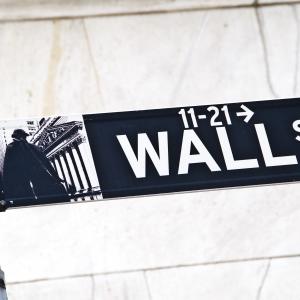
The interesting thing about human nature is that even among the oppressed, people will seek supremacy, a pecking order. We human beings have great capacity for tenderness and compassion, and we’re also the meanest things in the world! And even when we are oppressed together, we will try to find some advantage or superiority over others.
“As for you, my flock, saith the Lord, I shall judge between sheep and sheep, between rams and goats. Is it not enough for you to feed on the good pasture, but you must tread down with your feet the rest of your pasture?”
In other words: Do you have to get what’s yours and at the same time mess it up for others?

In July 2010 I joined with around 100 freedom fighters in Chicago, many of whom had traded the previous year of their lives to fight for comprehensive immigration reform. And we knew it was not going to happen in 2010, at least as we had imagined. Many in the room were exhausted, and defeated, and spent. The response from the campaign was to talk about the next hill to climb rather than deal with the pain and exhaustion in the room.
Doing justice is hard and exhausting work. We are compelled to action by the urgency of the suffering and pain and evil that mark life for so many in God’s world. And the work is never done. Win or lose, there is always another hill, another peak, another challenge that lies ahead. So the temptation is to keep on keeping on, and to rise to the next challenge.
For the past 20 years, I have either been a pastor or a community organizer, and for many of those years I have been both. For pastors and organizers, there is always one more email to write, one more call to make, and one more strategy to be explored. To be blunt, burnout and exhaustion are the order of the day.

I had such a hard time packing for my weekend away — cramming my bag with a stack of contemplative practice books, an anthology of my personal prayer journals, candles, an array of writing of instruments, and an iPod fully loaded with chanting monks and Hillsong worship songs. What does one take to a three-day silent retreat? Apparently a lot of noise.
My husband I were in the throes of church planting in Harlem. Our commitment to reimagining church not as a building, but as an incarnational community living out the Gospel of Jesus Christ had left our calendars fully loaded with “to do” lists for neighborhood barbecues, marches against “stop and frisk” laws, and prayer circles that met in our home.
And I was tired.

… my cup overflows.
-Psalm 23
Women have a lot to offer — and the problem is that we offer it too often and too long and without a break to fill the fountain. Women, at all ages, even girls, are set up to please and to give. Pleasing and giving are wonderful things — especially if they are appreciated and if they matter. When a womb is a fountain it overflows into goodness. When a womb is disrespected and unappreciated, even it can go dry.
I think of my two grandmothers: Lena and Ella. One was generous, the other stingy. One stretched the soup, the other made sure it was thick for her inner circle. One died happy and the other died sad. You may think I’m going to suggest that Lena, the generous, died happy and Ella, the less so, died sad. The truth is both had a certain joy and a certain regret. Women who give a lot to others often wonder when it will be their turn. Women who are as selfish as men with soup and self get hurt less. Women know we are “supposed” to keep the beat and feed the family. We also experience compassion fatigue, time famine, and wonder when what we give will come back to us. We worry that our fountains will go dry.

I love the 4th of July! It’s coming around again quickly, and I’m seriously deciding where I’m going to be based on which city has the best fireworks. I know. It’s a little crazy for someone who preaches about peace to yearn for a celebration attached to a war. But there’s something about the 4th that reminds me of the sacrifice that freedom requires in our fallen world.
Growing up our family would pack up the van (or minivan as we got older) and make the pilgrimage to the beach in Cape May, N.J. They knew how to do fireworks. Spectacular! Later, in college, while on summer mission project in New York City, I watched the Macy’s celebration from a rooftop on Roosevelt Island — choreographed fireworks as they played the Star Spangled Banner on the radio! I wept. To this day, I shed a tear when I imagine the moment when the rocket's red glare, the bombs bursting in air, gave proof through the night that our flag was still there. It gets me every time.
But, recently I stopped and thought for a minute: “Why is it that, when I think of the founding of our nation, the faces I see in my mind’s eye are all men (with the exception of Betsy Ross)?”
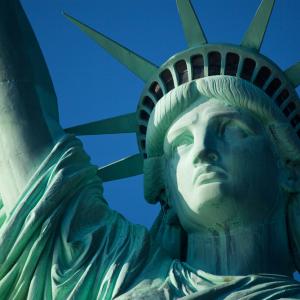
In 1910 my great-grandmother, Gelsamine Ferrigno, arrived at Ellis Island — a teen bride with her husband and two children desperate to make a better life. The story that has been passed down, confirmed by relatives both here and in Italy, is that the family decided that Gelsamine and Albert were the most likely to succeed so they pooled their resources, put them on a boat to America, said their goodbyes and told them to get work, make money, and send it back to their needy family in Solerno, Italy.
I often think about the elements of what I know of my story: immigrants from Italy, teenagers bearing a family burden, pressure to learn language and culture, permanent goodbyes to everything they ever knew, loneliness, fear.
There are two main reasons I often reminisce on this story in my family history. First, I am eagerly working to support reform to our immigration laws for the immigrants of today.
Our immigration laws are broken and are in dire need of some attention. Families are being separated, a permanent underclass is being kept in the shadows, and our country continues to thrive on the adage “we want your work, we just don’t want you.” It is not just. It is not biblical, and there is no reason for politicians to willfully put politics before the needs of vulnerable people in our communities.
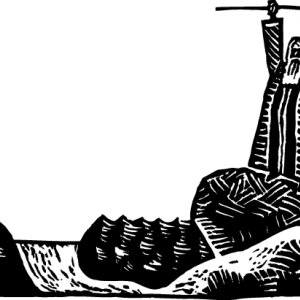
In one of the screen-saved memories cataloged from my childhood, I sit in the living room, cross-legged, chin supported by two fists, staring up at moving pictures flashing across a small screen. On network television — because we didn’t have cable back then — Moses (aka Charlton Heston) led thousands of his people out of captivity. They just walked out of Egypt — streams of them. And then they reached the Red Sea.
The Egyptian army was at their back, pressing in. In that moment, though they had left captivity, freedom was not a done deal. They still had to cross over. They were still at war. They still had to outrun an army trained to kill or enslave them again.
Heston — I mean Moses — stood straight-backed on the bank of the Red Sea. He lifted his staff and put it down at the edge of the water, and a miracle took place in living rooms across America. The sea parted. I’ll never forget that moment. This moment was crafted before the digital era — before Disney’s Prince of Egypt, even before Star Wars, and yet it was still awe-inspiring. My eyes focused like lasers watching whole families cross a sea on foot.
Moses led. He was not a king. He was a foster child. He was not from the dominant culture. He was from an enslaved people. He was not a great orator. He stuttered, but he led anyway. He said “Yes” to God’s call and leaned into it. And because he did, the people were set free.

Does Jesus love African-American males? Then why aren’t we telling them so?!
I recently held a Town Hall Meeting at my church in my hometown of Madison, Wis., regarding the blaring racial disparity between whites and African Americans. This gathering attracted about 650 people who wanted to hear my thoughts after reading my "Justified Anger ” cover essay in a local newspaper. It appears that when one considers the economic, academic, arrest and incarceration disparities between African Americans and whites in Madison (and surrounding Dane County), there is no bleaker place for African Americans to be in the entire country than Madison. Although Madison — with its great university, beautiful lakes, bike paths, and educated residents — typically receives high marks as being among the best mid-sized American cities in which to live, it is now developing a different reputation about life here. Sadly, our community has been nationally deemed as ground zero for the disintegration of African-American males!
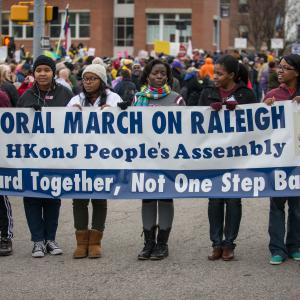
I believe that deep within our being is a longing for a moral compass. For those of us who are moved by the cries of our sisters and brothers, we know that, like justice, the acts of caring for the vulnerable, embracing the stranger, healing the sick, protecting workers, welcoming and being fair to all members of the human family, and educating all children should never be relegated to the margins of our social consciousness. These are not just policy issues; these are not issues for some left vs. right debate; these are the centerpieces of our deepest traditions of our faiths, of our values, of our sense of morality and righteousness.
We must remind those who make decisions regarding public policy what the prophet Isaiah said "Woe unto those who legislate evil ... Rob the poor of their rights ... make children and women their prey." Isaiah 10: 1-2
Martin Luther King, Jr. said 46 years ago in one of his last sermons that if you ignore the poor, one day the whole system will collapse and implode. The costs are too high if we don’t address systemic racism and poverty. It costs us our soul as a nation. Every time we fail to educate a child on the front side of life, it costs us on the back side — financially and morally.
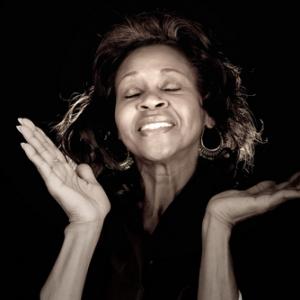
The women were there at the foot of Jesus’ cross.
The women were there when they laid him in the tomb.
The women walked through the desolate graveyard in the darkest hours of the night — the hours just before dawn, carrying sweet spices prepared to anoint Jesus’ dead body for proper burial. But they never got the chance.
They witnessed the earthquake, talked to the angel, and ran to the other followers announcing the resurrection of their beloved.
And Jesus’ mother, Mary, huddled in the upper room praying with the other women and the rest of the disciples in the days following the resurrection. Until that day, 50 days later, when tongues of fire fell on them all and Peter reminded the crowd of Joel’s ancient prophecy: “Your sons and daughters will prophesy.”
From the cross to the upper room, the women are lifted up! As the church stands in the light of Easter Sunday and now sets its face toward Pentecost, let us remember the women. And, as we do, let’s also remember the women in our pews and surrounding communities — the challenges, fears, and the very real dangers women face every day.
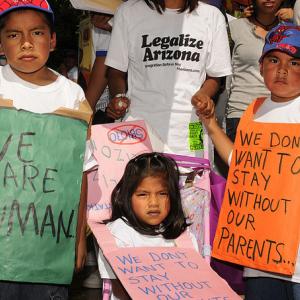
“That I may know him, and the power of his resurrection, and the fellowship of his sufferings, being made conformable unto his death; If by any means I might attain the resurrection of the dead.” Philippians 3:10-11
Harsh winters make us more deeply appreciative of spring. Last week, after a particularly intense winter, it finally reached 60 degrees in New York. I, for one, celebrated heartily. Spring is a reminder that winter is not interminable and flowers will bloom again. Almost exactly one year ago, the Senate released a bipartisan bill on immigration reform. Many Christian leaders celebrated the possibility that finally the nearly 11 million men, women, and children would be afforded the opportunity to integrate into this great country. In addition, in January the GOP released a set of principles that set the tone for the genuine possibility for immigration reform. There was a growing consensus that this is the year for immigration reform. Then the news started to change and many prognosticators said, “Immigration reform is dead.”
It is into this public eulogy of immigration reform that the Christian message of Lent and Easter can breathe new life.
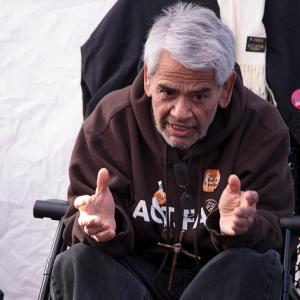
As an immigrant who made the long journey from Zacatecas, Mexico, to the farmlands of California many times as a child, the Lenten story of Jesus’s wandering for 40 days in the desert has always resonated with me very deeply. And the Easter celebration that follows sustains my hope and resolve that the faith community’s long movement to reform our broken immigration system will succeed.
Late last year, I, along with several other immigration advocates and inspiring faith leaders, camped out in a tent on the National Mall in Washington, D.C., to call attention to the moral crisis and human suffering caused by our broken immigration system. We asked ourselves: What are our faith, our words, and our history worth if not translated into action, sacrifice, and redemption?
So, for 30 days we fasted and prayed that leadership in the House of Representatives would follow the Senate’s lead and pass a comprehensive, bipartisan immigration reform bill. The power of prayer surrounded us as we were led in reflection on a daily basis by pastors who serve undocumented families, by immigrants who suffer under our unjust system, and by public officials who came to see our commitment as days without food turned into weeks.
Even though the House refused to act in 2013, we believe that our fast, and the support of thousands of solidarity fasters around the world, helped change the discussion about reform from one of dollars and cents to one about people and families. Our sacrifice and the suffering of our immigrant brothers and sisters will end in victory and redemption.
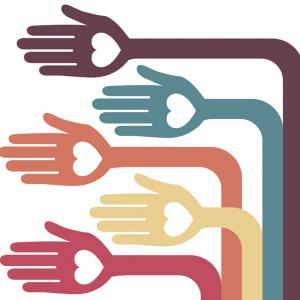
As we approach Holy Week, I’ve been re-reading the Gospel accounts of Jesus’ Last Supper, trial, crucifixion, and resurrection. In John 17, as Jesus prays for his disciples and their successors in the hours before he is arrested, he prays for our unity as his church:
…that all of them may be one, Father, just as you are in me and I am in you… May they be brought to complete unity to let the world know that you sent me and have loved them even as you have loved me. (John 17:21, 23)
Central to our mission as Christ’s followers is to share with the world this good news: that the Father sent the Son because he so loved the world — but the best observable evidence of that Gospel reality, a unified Church, seems a distant, utopian dream. Just within the United States — this small sliver of the global church — we are divided by denomination, by race, by political ideology, and by the competitive human instinct that leads even those congregations who resemble one another doctrinally, ethnically, and politically to jockey over the same individuals in order to fill their sanctuaries (or auditoriums) and offering plates. Perhaps the situation is not quite so stark: I know that many — probably most — believers share the desire for unity. It just seems at times that we have so far to go, and might be drifting in the wrong direction.
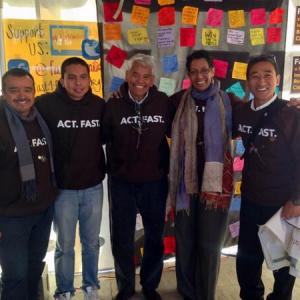
I was traveling to Culpeper, Va., on the #Fast4Families bus tour to speak to a group of workers assembled at St. Luke’s Lutheran Church. As we looked out the window we were struck that every 50 feet there stood a plaque marking the place where another significant battle took place in the Civil War.
As we sat down in the church, I didn’t know what I was going to say to all-immigrant group. My message up to that point had focused on mobilizing non-immigrants to join the movement. What could I say to this immigrant gathering?
I prayed. I asked God, “What do you want to speak to this group through me?’ And the dots started to connect.

What more perfect a passage to enliven our Earth Day celebrations than Romans 8:20-25?
Paul's letter to the Romans was certainly not an exhortation to deepen creation care by weighting it with environmental justice. It wasn't an exhortation for the middle-class church to listen to the groaning of people under the bondage of environmental racism. It wasn't intended to paint a picture of the intersection of climate change, poverty, and racism.
But we — two evangelical activists — are just foolish enough to give all that a try in this short space!
Our dear Apostle Paul in his letter to the Romans paints a picture of the new age inaugurated by Jesus' death and resurrection. Jesus has taken sin – that which infiltrated the world (5:12), enslaved the world (6:6, 17-18), and brought death and destruction (7:8-14) — and had victory over it. By our death in baptism and resurrection with Christ, we participate in his victory over sin (6:4). This is a new age, we put on our new selves, we live with the (re)new(ed) creation ahead of us.

And as I worshiped I realized creation wasn’t singing with me. I had entered into creation’s ongoing worship of God!
But Scripture speaks of another utterance of nature — a groaning. (Romans 8:19-22) Even as creation worships, it bears the weight of our sin. Our addiction to consumption, our oil drills and oil spills, and our depleted uranium bullets whizzing through theaters of war in countries ravaged, torn apart — both the people and the land. Creation is groaning, even as the trees lift their branches heavenward in worship.
The Genesis 2 story of creation offers a profound picture of humanity’s relationship with the rest of creation in the beginning. In Genesis 2:15 God called humanity to till and keep the Garden of Eden. The Hebrew word for “till” (‘abad) is also translated “to serve” (as a bond servant). The Hebrew word for “keep” (shamar) is most accurately translated “to protect.” Thus, we were called to serve and protect the rest of creation. In the very beginning of our existence, we related to the land as its servants — its protectors. That relationship was full of care, nurture, security, and selfless service.

Last week during my Sunday school class, one of my second graders asked, “How can we go to heaven, if we continue to sin?”
As usual, I am often stunned and quieted by the striking questions that come from the mouths of young people.
I usually respond to the inquisitive questions from my Sunday School students by reiterating what I have been told by many a Sunday School teacher: “Even though we break our promises, God doesn’t; God promised us if we believe in God and that God’s Son Jesus died for our Sins, we will go to heaven — even when we mess up.”
While that seems like a really ‘simple’ explanation of one of many biblical truths, it is still striking and amazing that even though we continue to ‘mess up,’ God has not retracted on God’s promise of offering us a beautiful ending to the troubled world we live in today.
As I think about Romans 8:21 and how it speaks to the fact that “creation itself will be liberated from its bondage to decay and brought into the freedom and glory of the children of God,” I get excited. Not only because we all will see the glory of God one day, but that the bondage and decay we are experiencing in our physical world will end in Glory!
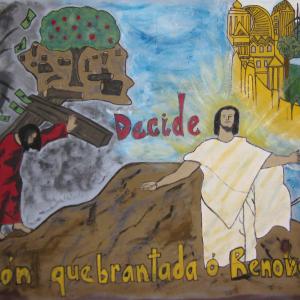
Last fall, on a Sunday afternoon, as I walked out of the church, a young man tugged on my Franciscan habit. It was Miguel, a member of our Latino choir.
“Father,” he said, “please, pray for the people of my home parish back in El Salvador, especially for one of the priests who has received death threats.”
Startled, I asked: “What is happening there?"
“These priests are organizing against the multinational companies,” he said. “The companies are looking for gold. What will be left for our people? Only poisoned water, a wasteland, and death.”
A few weeks later, I had another similar conversation with a group from Guatemala. Theirs was a similar tale of how indigenous communities were being threatened by mining projects.
As a Catholic and a member of the Franciscan Order, I believe that we are called to “read the signs of the times” and to listen to the cry of the poor and the “groaning” of God’s Creation.
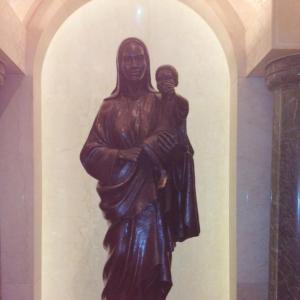
Are Black people mentioned in the Bible? Absolutely. The Bible is a multicultural book. This statement may sound controversial but archeology, history, and the text prove it to be true. It may be difficult to see the black presence in the Bible because you won’t read the terms black or African but you will read the terms Ethiopians, Cushites, Egyptians, and other tribal terms. The Roman Catacombs show biblical scenes painted by first- and second-century persecuted Christians, and their paintings clearly show people of color. What would Roman Christians gain from painting these characters black? What did these early Christians know and accept that seems unbelievable today? It appears that our faith has been distorted. One of the effects of racism is the whitewashing of history and sadly this has taken place even in our biblical studies.
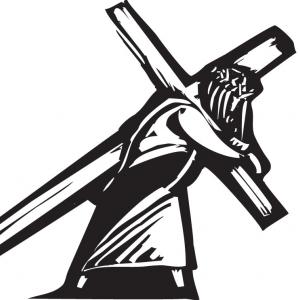
There are so many people that have gone before me, people that have sacrificed their lives in pursuit of justice and equality. Because of this, I feel a deep sense of commitment to honor them by standing for some of the same things that they did. I am in complete awe of two things that connect deeply for me. The first is the cross and how Jesus gave his life for us all. The second is my ancestors who somehow understood Jesus’ sacrifice and passed it onto me through intense persecution.
I can’t say that I know persecution like my parents, grandparents, and great-grandparents knew. I have been back to southern Alabama many times for family reunions and visited slave graveyards where relatives are buried. This compels me to be and do more with my life. I can’t say I understand why Jesus would choose to become human, walk this earth as a human being, and then die at the hands of his own creations to save those who were crucifying him. However, I do know it pushes me to be and do more with my life. I feel like I would let them down somehow if I didn’t take responsibility for addressing injustice with my life.
My life is not my own. I am the product of sacrifice. I am here because of those who saw beyond themselves and thought personal sacrifice was worth giving up to allow justice to take hold. I am here because Jesus modeled something completely illogical on the cross and then some of my ancestors took that example seriously and repeated it. I have no real right to the life I live. My only recourse is to continue the tradition handed to me in the same way.

I stepped off the elevator and was greeted by three men with hoodies in church yesterday. My shoulders tensed for a few moments. Growing up in New York City, I’ve been groomed in paranoia and 20/20 peripheral eyesight. Yet after taking a second look, I smiled as I admired the theater props: Three hooded figures containing the faces of Hillary Clinton, Jay Z, and Trayvon Martin, with a caption reading, “We are Trayvon Martin.”
Metro Hope Church meets weekly at Harlem’s National Black Theater, so our church gatherings can often be a dance in improvisation as we’re frequently welcomed by new sets. One summer we were greeted by a gigantic “tree” protruding from center stage. It made this preacher’s imagination run vivid with all sorts of sermon possibilities.
But the hooded figures that greeted me last Sunday were a tribute to Trayvon Martin called, Facing our Truth: 10 Minute Plays on Race and Privilege. This month also happens to be the month that Trayvon Martin was born, and a month for celebration of Black History. These convergences do not escape me, nor does the distinct mission of our church in Harlem.
No stranger to dialogue on race and privilege, our church will often reflect on Dr. King who once lamented, “We must face the fact that in America, the church is still the most segregated major institution in America … 11:00 on Sunday morning …we stand at the most segregated hour in this nation.”
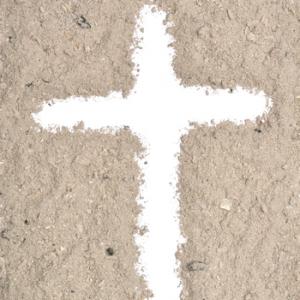
With the exception of “WWJD” bracelets, there are few times when outward physical appearance reveals Jesus followers in the public square. Other religions often require their faithful to move through the mundane activities of life outwardly proclaiming the core of their faith. For the traditional Hindi it is the saree or the sherwani. For the Muslim it may be the kurta or hijab; for the traditional Jew the yamaka or headscarf. Every day around the world these men and women move through life, often in cultures unlike their own — marked.
Once a year the global body of Christ reveals itself to the world en masse. Foreheads marked with ashes, the global church moves through the first day of Lent with the sign of the cross in plain view for all to see. In the midst of the mundane, those ashes blend with sweat and soot and reveal to the world just who is a follower of Jesus in their midst.
It is a profound feeling to move through the streets of Washington, D.C., New York, Los Angeles, Cincinnati, or Huntsville, Ala., with your deepest beliefs marked on your forehead.
The Lenten mark of the cross, in tangible form, brings the church into solidarity with Jesus’ 40-day struggle in the wilderness — the place of desolation, the place of waiting and wandering, temptation, and confrontation with the limitations of our human-ness.
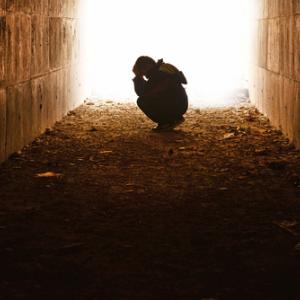
SNAP began in 1964 when President Lyndon B. Johnson signed the Food Stamp Act as part of his unconditional “War on Poverty.” In his remarks upon signing, Johnson said: “I believe the Food Stamp Act weds the best of the humanitarian instincts of the American people with the best of the free enterprise system. Instead of establishing a duplicate public system to distribute food surplus to the needy, this act permits us to use our highly efficient commercial food distribution system.”
Johnson continued: “It is one of many sensible and needed steps we have taken to apply the power of America's new abundance to the task of building a better life for every American.”
Imagine. Fifty years ago the Food Stamp Act was viewed not as charity, but rather as an ingenious utilization of American enterprise in order to help “build a better life for every American.”
And it is genius.
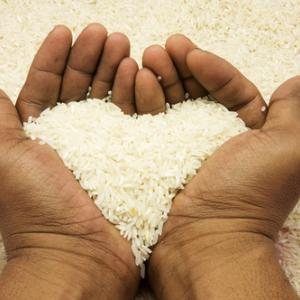
Many of us may not know what it is like to be hungry, to regularly miss meals, or to consume a diet void of essential nutrients to live a healthy life. Poet, diplomat, and politician Pablo Neruda captures this feeling well in his poem “The Great Tablecloth.” Just before the holidays, millions of Americans learned what some aspect of hunger felt like as they saw a reduction in their SNAP (formerly food stamp) benefits.
On Nov. 1, every SNAP household saw its grocery budget reduced when an $11 billion cut went into effect — the equivalent of 10 million food stamp meals a day. And the program isn’t out of the woods yet. The House and Senate have begun to finalize a farm bill that will impact vital anti-hunger programs. A compromise proposal expected in the coming weeks could further cut SNAP by as much as $8 billion, at a time when lawmakers need to protect and strengthen it.

The central figures in four of the planet’s largest religions – Christianity, Islam, Buddhism, and Judaism – were all once homeless. Moses was encamped in the Sinai, unable to return to the Promised Land. Jesus was born in a manger. Buddha wandered through the wilderness seeking enlightenment. The Prophet Muhammad was forced out of Mecca.
Is it a coincidence that each of these figures was, at key parts of his life, dispossessed from the society around him? Hardly. This is a clear message that even the most powerful can be made powerless.
In both Leviticus and Deuteronomy, believers are directed to give a set portion of their harvest to people in poverty and immigrants. It is neither voluntary, nor are the amounts to be based on charitable whims. It is a commandment to automatically give a specific percent, making it an anti-hunger tax of sorts. In fact, both the Old and New Testaments make it clear that justice is a higher calling than mere charity.
In Mathew 25, not only does Christ proclaim that those who clothe, house, and feed the “least of these” are engaging in acts equivalent to directly aiding the Lord, he also preaches that those who refuse to aid the poor are consigned to damnation.
Most secular ethical traditions also make societal actions to reduce hunger, poverty, and homelessness a centerpiece of their teachings.
Virtually every elected official in Washington claims to abide by these ethical and faith-based traditions. Indeed, many have used their professions of faith to advance their political careers.
Yet many of these same leaders repeatedly take actions opposite to the values they espouse.

Do you believe in the spiritual realm? I mean really believe; not in your head — in your disciplines?
Do you believe that spiritual power can alter, transform, or even redeem social, institutional, structural and even legislative power?
I’ve been thinking a lot about this lately. I’m not sure I really believed … until recently.
On Sunday mornings, in the midst of our safe sanctuaries, our five-song worship sets, our 15-minute sermonettes and our one-hour services that can be timed with an egg timer, how does our worship and our practice offer witness to the reality of the spiritual realm? How do our disciplines engage the inner world beyond the good feeling we get from songs that comfort us? Comforting songs are valuable in our worship. In fact, God uses those songs to remind us of the ways the Holy Spirit interacts directly with us, knows us, and knows our most intimate needs. But how does our worship — how do our congregations’ spiritual disciplines strengthen our understanding and engagement with the powers, the principalities, and the world beyond our own homes and sanctuaries?
“For our struggle is not against enemies of blood and flesh, but against the rulers, against the authorities, against the cosmic powers of this present darkness, against the spiritual forces of evil in the heavenly places” (Ephesians 6:12).
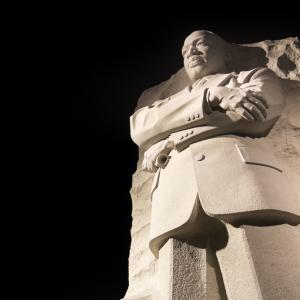
I must use the adverb “almost” because there is a necessary distinction between all and some. It is the difference between mighty and almighty.
But we must never forget that whatever is mighty can harness the power to destroy lives, families, communities, institutions, and nations. This is what racism does on a daily basis.
We have, to some degree, lost the will and/or the capacity to identify and challenge this destructive and powerful force in our culture and institutions.
This Advent season presents the church with a great moment — an opportunity — to sharpen its discernment. It is an opportunity for the church and the world to experience a new birth in love, racial justice, and reconciliation.
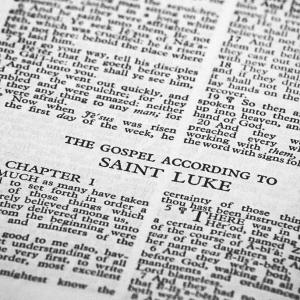
There is an awesome moment in the opening chapter of the book of Luke where the writer frames his gospel as an epic celestial battle taking place in the heavenly realm: This is the story of the reign of men vs. the reign of God.
Luke makes it clear. What happened in these pages began in the days of King Herod of Judea (Luke 1:5). King Herod was a product and protector of empire. His father was appointed procurator of Judea by Julius Caesar. He subsequently appointed Herod military prefect of Galilee. After the death of Julius, Antony, and Octavian, Augustus Caesar favored Herod and gave him the name "king of the Jews," eventually becoming governor of Judea.
Herod was most concerned with maintaining his power — at all costs. He built the Roman Empire at his own people's expense. He built great monuments and structures, including the reconstruction of the Jerusalem Temple, enslaving his own people to do it. He used the Jews' labor to erect temples to pagan deities, and, paranoid of anyone who might usurp his power, Herod schemed against his own family, executing three of his own sons for insurrection — one only a few days before his death.
Enter a priest named Zechariah and his wife, Elizabeth.
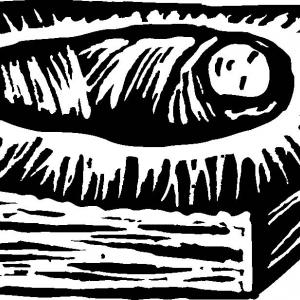
“Sometimes I feel discouraged and think my work’s in vain, but then the Holy Spirit, revives my soul again.”
So where does this revival come? Often when we looked at a dilapidated building in our community, the revival comes with the eyes to see the possibilities of rehabbing, of new uses. The revival comes in community, in coming together to take action. There is nothing like some music and food, too, to bind us together.

Thinking back, I haven’t always been great about getting my car “winterized.” I grew up in fairly temperate Kansas, and mostly parked in a garage at home. There didn’t seem to be too great a chance of the car’s malfunctioning on me, and I was often more interested in where the car was getting me than whether it was in prime shape. I knew the car would never be perfect, but by and large, it seemed functional.
Then I moved to Chicago, where the winters were colder, the streets harder, and a garage a rare luxury. Suddenly winterizing seemed a bit more critical.
Today I am (by virtue of my baptism and in a way specifically called for by my ordination vows) partly in the business of serving as a prophet. Oh, I don’t rate myself as too great of one, but I do think that God has made me a part of that work. I may not be all of Christ’s Body, but I’m a piece of it. So prophecy and transformation are some of my duties too. And the season of Advent has me thinking a bit about whether I do enough to “winterize” my prophecy.
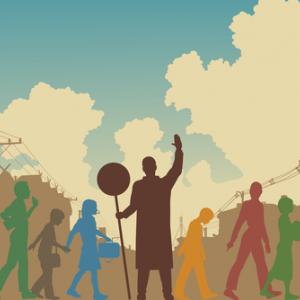
In my lifetime I’ve driven on three roadways named after Martin Luther King, Jr. One was a street, another a boulevard, and the third a highway. And whether by cosmic irony or human design, each of these roadways passes through communities of significant poverty and color, namely black. Around these roadways are boarded up storefronts, crack and heroin dens (think The Wire), condemned row houses, and inevitably, always – public schools.
From 2001 to 2006 I left the safety of the pulpit to teach in the schools of Baltimore and Washington, D.C., pursuing a call to care for the proverbial least of these (it’s always pained me to think how I might feel to be called this, as in hey, you least of these, can I help you with anything? – but that’s a reflection for another time). I left also the safety of a suburban megachurch, where all you needed to do to understand the socioeconomic standing of its members was to walk through the parking lot, and the familiar cultural context of my Korean-American upbringing.
This article, however, is not about me. It’s about beautiful, creative, energetic, and intelligent children — kids who, as the least of these, are too often treated as such. There is no limit to blame: from the mother who comes to school drunk, a prostitute, publically shaming her son (who loves her nonetheless and gets beaten by the other boys defending her honor); to the worn-out teacher who drags a “difficult” child into the bathroom, bruising her arms and threatening her with verbal vitriol and rage; to the administration that promotes student after student, knowing they are years behind, but too old to remain; to the system that maintains, protects, and worships a biblical truism, that for to all those who have, more will be given, and they will have an abundance; but from those who have nothing, even what they have will be taken away (Mt.25:29).

I remember the first time I ever got straight A’s. It was also the last time.
I was in Mrs. Becker’s 4th grade class at John Story Jenks School in Philadelphia. I was always good at reading, I LOVED science projects, and art class was fun — but math? Ugh. Math was my nemesis. In 4thgrade the times tables felt as insurmountable as that dang rope everybody else could whiz up and down in gym class. I just couldn’t figure it out. In fact, to this day, I haven’t figured the rope.
So, my father became my times tables drill sergeant and resorted to straight memorization tactics, making me write each one 10 times. Then he sat across from me at the dining room table and drilled me on the times tables until I said them in my sleep. It was brutal … and oddly, one of the fondest memories of my elementary school years. Not only did I master multiplication, but I also learned something much more important. When my report card came back that quarter with straight A’s, I learned that I could learn!
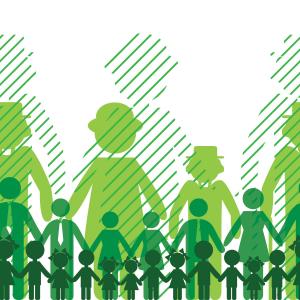
I love October. As a teacher, it was that time of year where rhythms were becoming established and the seeds of learning were beginning to sprout. In ministry, it is the time where I find myself riding the waves of my student’s school schedules in an effort to connect and converse. In either case, education, shapes not on the schedule of my life but the purpose.
As I breathe in the crisp autumn breeze, it reminds me to consider the larger partnership between the educators and the church. When we, as ministers and church leaders, consider what role education plays in the life of the church, we have to consider the active part of the church in the education of not only the church community, but its larger context.
Education, in the public context, is a constant topic of political struggle and strife. Education, in the ecclesial context, in its best is in-depth Bible study and at its worst is education by osmosis and observation. What is the call or consideration of the church to the topic of education? What role does the church have in the education of the community?
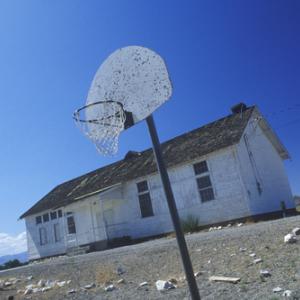
Most Americans share a common understanding that many public schools in poor neighborhoods aren’t great. It’s rare that I engage anyone who doesn’t know this basic fact on some level. But what’s less common is a deeper understanding of the extent of the problem. And sadly, even less common than that? Finding individuals who express a deep conviction that educational inequity can be eliminated. Faith communities are poised to add our voices to this much-needed conversation.
Fifteen million children live in poverty in the United States. Given poverty’s impact, many of these children already face additional challenges in their lives. For many young people, education can be “the great equalizer.” A high quality school can provide students with the necessary foundation to go to college and have a variety of opportunities opened to them. Poverty can become a thing of the past. But students growing up in poverty are more likely to attend low-performing public schools. In fact, only 22 percent of children who have lived in poverty do not graduate from high school. Only 9 percent receive college diplomas. And, not surprisingly, given our nation’s historical intersection of racial injustice and poverty, African American, Latino, and Native American students experience some of the nation’s biggest educational inequities.